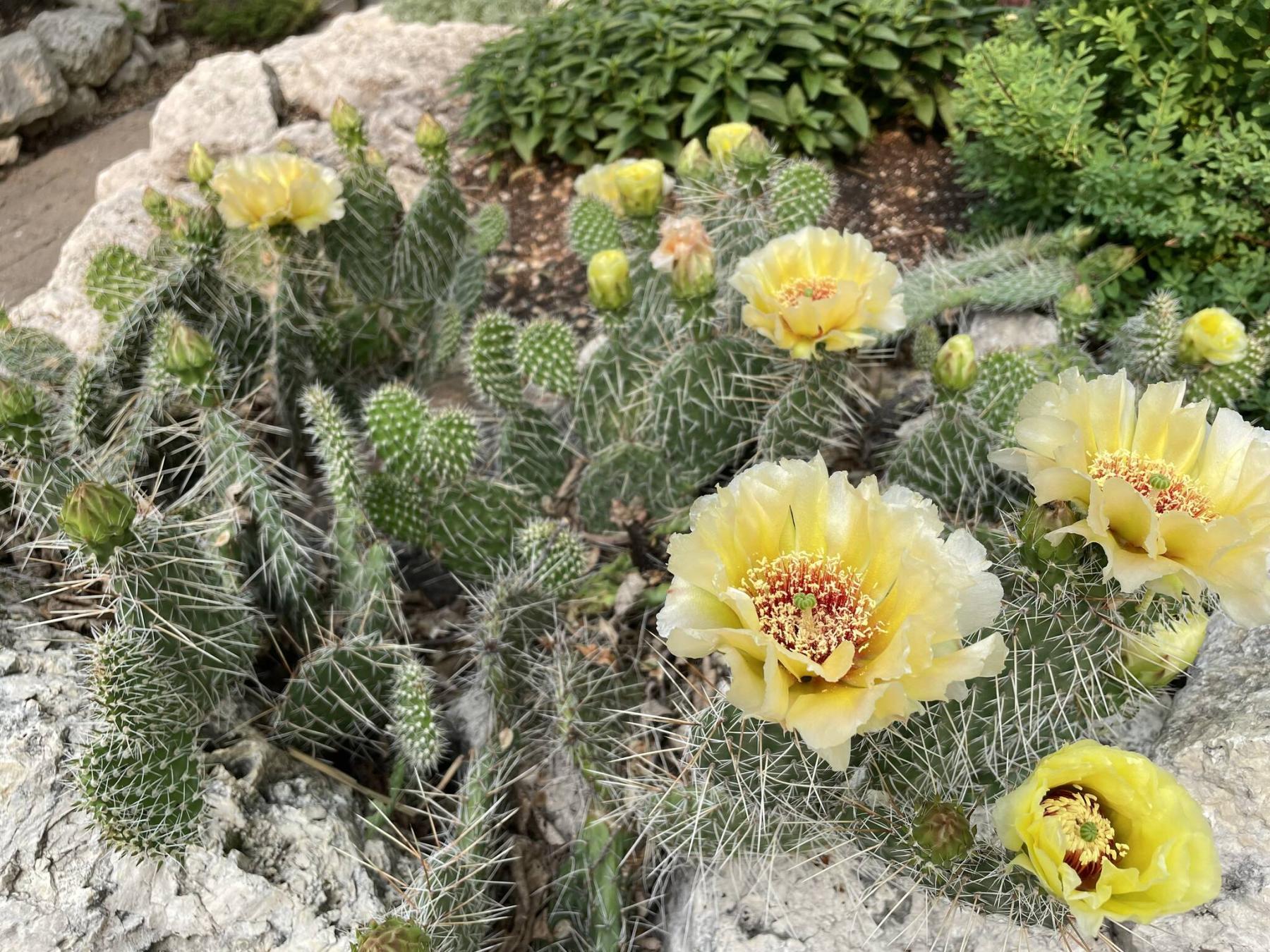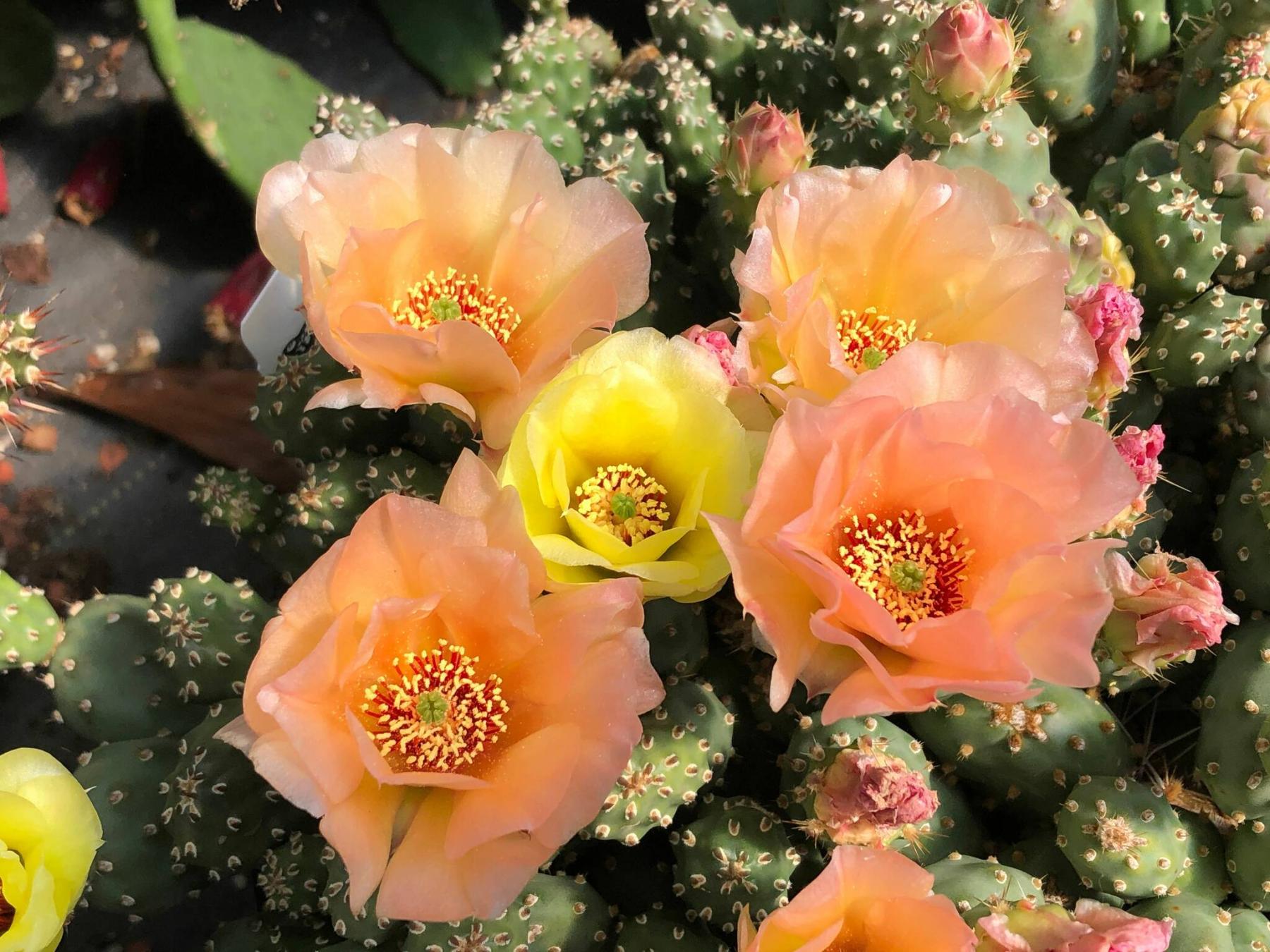
Phoenix Perennials
Opuntia Alberta Sunset is a Zone 3 prickly pear with peachy keen flowers and nearly spineless pads.
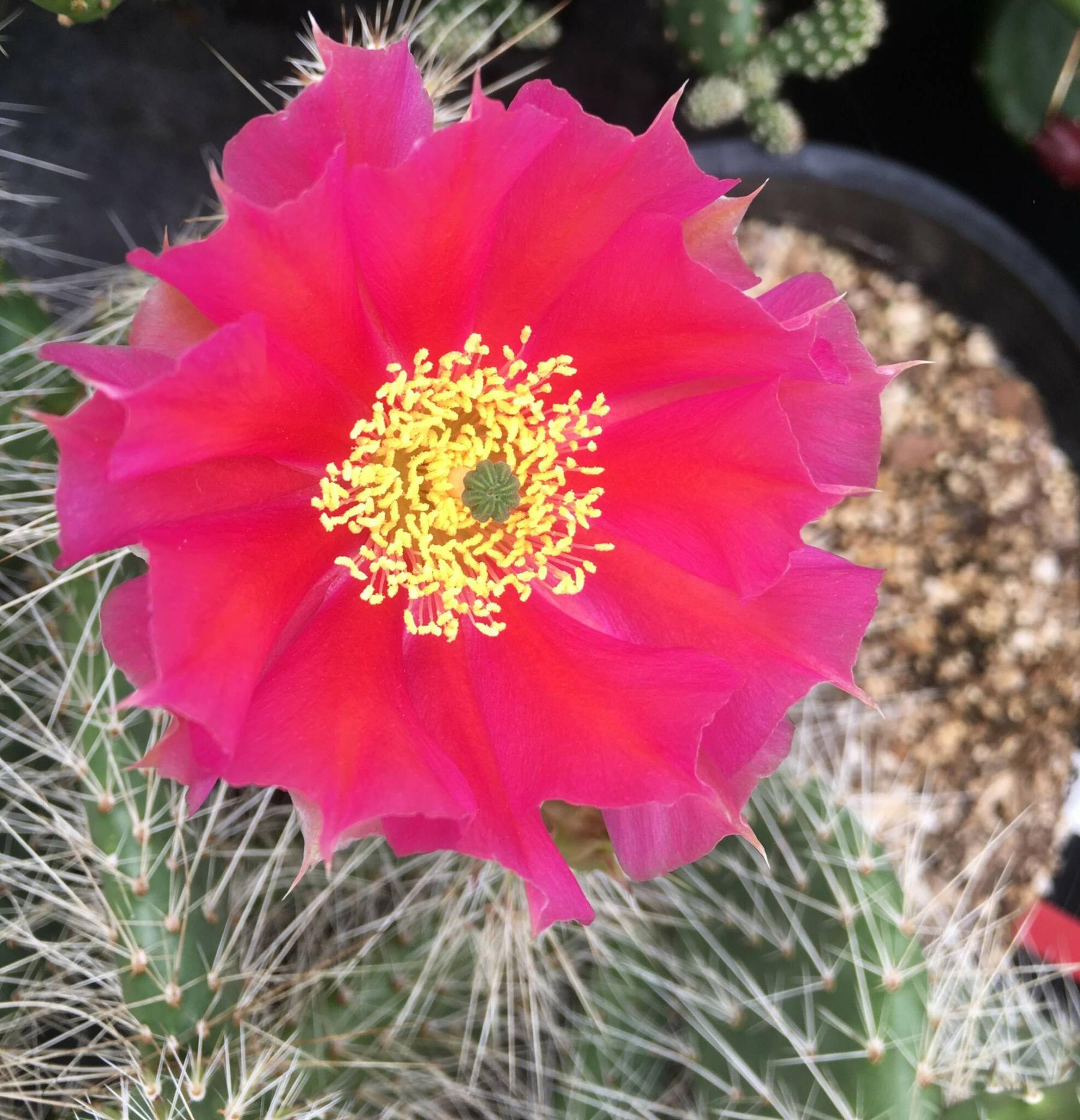
Phoenix Perennials
Opuntia Browse Pink, aka plains prickly pear, is a hardy cactus with double ruffled hot pink flowers.
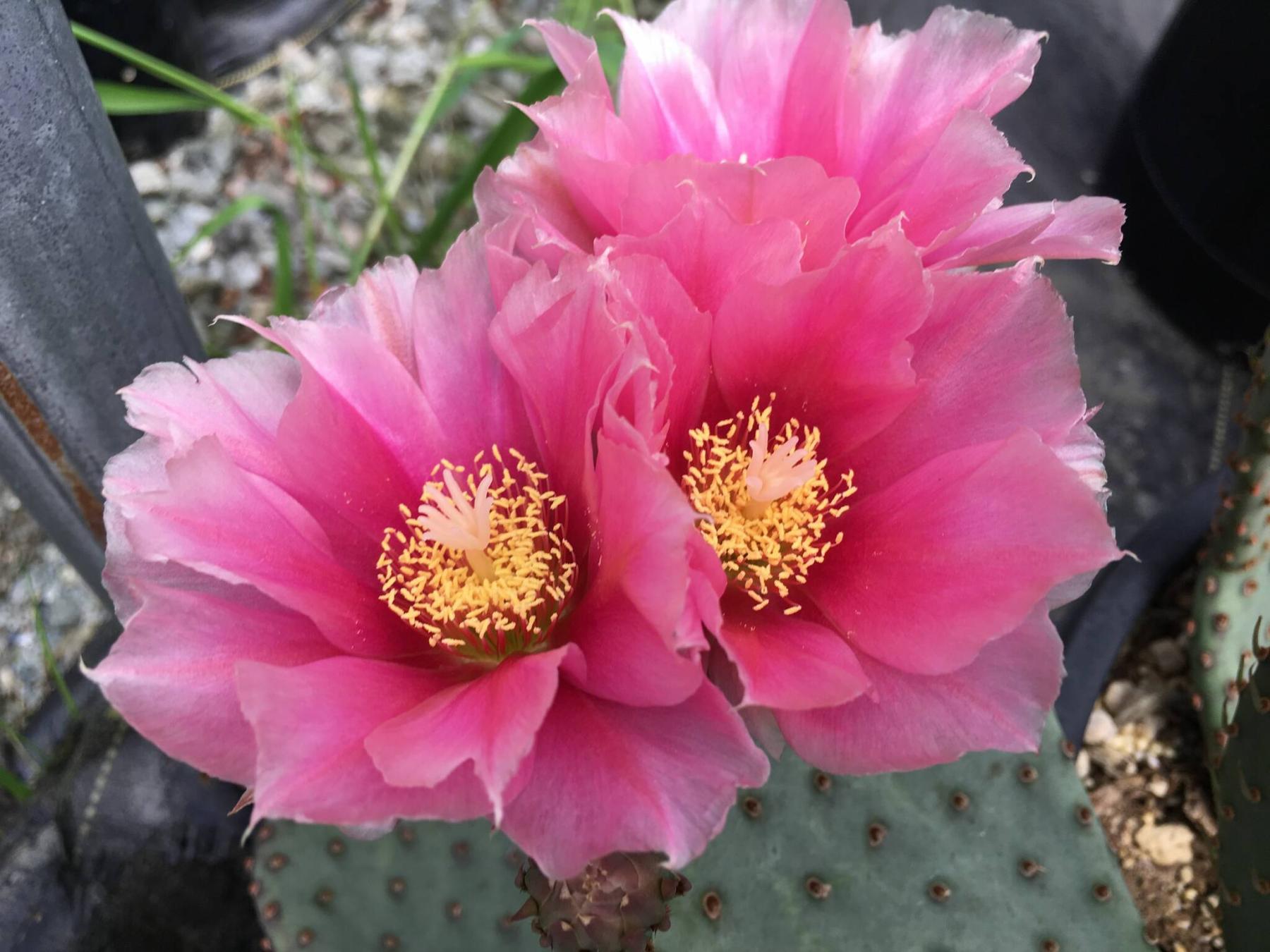
Phoenix Perennials
Opuntia Peachy, known as beavertail cactus, is hardy to Zone 4 so may need some extra winter protection.
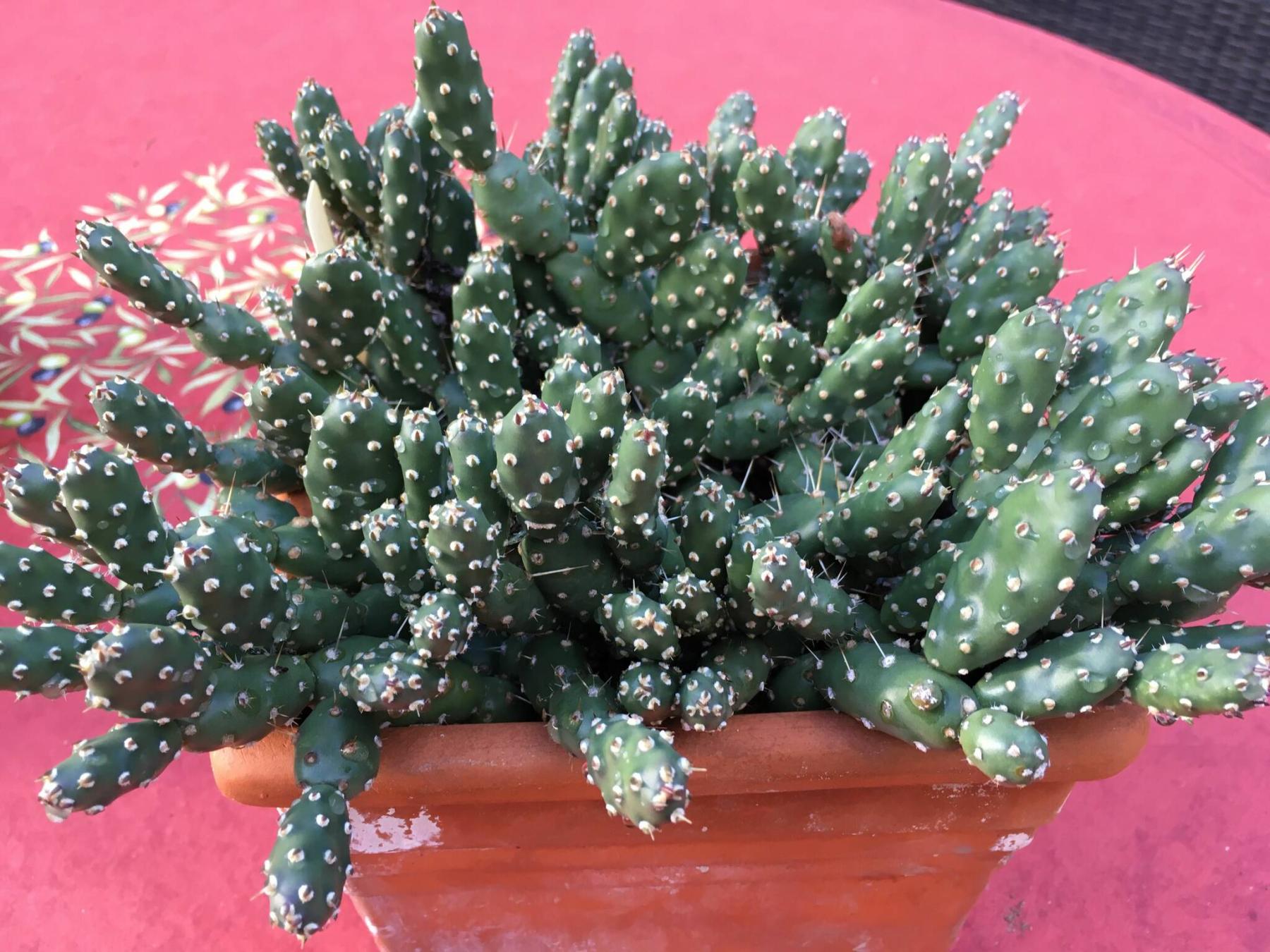
Phoenix Perennials
A muscular cactus, Opuntia Jason Owens has bright yellow flowers and is hardy to Zone 3. Who knew?
Cacti is suddenly everywhere. Garden centres are displaying a greater variety of unique types of cacti for growing indoors. Their structural shapes and prickly characteristics bring something out-of-the-ordinary to the indoor garden. Potted in 2-inch pots, it’s easy to create a mini display on a sunny windowsill. But why stop there? Opuntia fragilis prickly pear is a hardy cactus variety that you can grow outdoors.
The smallest and most cold-hardy species of North American prickly pear, Opuntia fragilis (known by the common name brittle prickly pear) was first described by Thomas Nuttall in 1819. Pronounced o-PUN-tia, the name may relate to Opuntus, an ancient Greek town or it may originate from the Latin word puncti which means prickled. Fragile prickly pear (Opuntia fragilis) is widespread across western North America and can be found growing wild in all Canadian provinces from Ontario west. It is native to Manitoba and grows wild in Spruce Woods Provincial Park. Escobaria vivipara, commonly known as pincushion cactus, is also native to Manitoba where it grows wild in the areas of Spirit Sands, Lauder Sandhills and Oak Lake.
It’s possible to find Opuntia at local garden centres but it is not widely available. Phoenix Perennials, a mail-order nursery in Richmond, B.C., has gone wild for Opuntia as well as many other types of cacti. “I’m kind of crazy about cactus,” said Gary Lewis, owner, in a recent phone conversation. He grows many different types of Opuntia fragilis but also hardy varieties of Opuntia polyacantha and other unique types that are hardy to Zone 3 or Zone 4. But rather than shipping cactus that is rooted in pots, Phoenix Perennials made the decision to harvest and ship cactus pads which are less dangerous to handle both by nursery staff and consumers.
“At first we thought we would propagate Opuntia and grow them in pots,” said Lewis. “But dealing with cactus is a little bit dangerous. Handling potted Opuntia that have multiple pads and sharp spines is quite difficult. It’s easier (and safer) to harvest the cactus pads. When we handle Opuntia pads we use barbeque tongs or kitchen tongs.”
Phoenix Perennials ships cactus pads to mail-order customers throughout September. “We ship at this time of year because it’s when the new cactus pads have fully matured on the plants,” said Lewis. Spring is a less ideal time for shipping cactus pads because that’s when cactus pads are starting to form soft new growth.
Opuntia fragilis has very small pads — about 2.5-3.81cm or an inch to 1.5 inches tall. The shape of the slightly flattened pads is almost cylindrical. “We sell them by threes and the advantage to the customer is that they cost less than a potted plant and shipping costs less,” said Lewis. Opuntia fragilis grows to a height of 2 to 8 inches (5-20cm) and spreads slowly to 12 to 24 inches (30-60cm) to form a low-growing mat.
If you purchase hardy Opuntia cactus pads, you may decide to grow them indoors in a pot in a bright sunny room for the first winter, but another option is to plant the cactus pads in the garden in September as soon as they arrive. Choose a location that receives good snow cover during the winter. “Plant the cactus pad upright and bury the bottom one-quarter to one-third of the pad into a prepared bed so that the pad sits straight up and down,” said Lewis. “You can also lay the cactus pad on an angle or even lay it flat because cacti will root from every one of the areoles.” Areoles are the small bumps on cacti from which clusters of spines grow. “Cactus will root from every one of those points so you could lay the cactus at a 10-degree angle with the base of the pad under the surface of the ground or grow it vertically.” A mulch layer of shredded leaves around each cactus pad (but not piled on top) will give an extra layer of protection for the winter. Remove the mulch in spring. Shred leaves by driving the lawn mower over them once or twice.
Cactus prefers a full sun location that is well-drained. Avoid rich soils or heavy composts. Sharply draining sandy soils are ideal. Adding a layer of pea gravel to the surface together with a mix of rocks or stones will help to increase drainage. “Building up a bed so that it is 4 to 8 inches (10 to 20 cm) above the surrounding garden would be a great approach,” said Lewis. “This would promote good drainage and show off a little colony of cactus, too, by bringing them closer to you so you can see the flowers better.”
The flowers of Opuntia prickly pear are beautiful and pollinators love them. Opuntia fragilis Alberta Sunset is a Zone 3 prickly pear that has yellow flowers that age to apricot and pink with nearly spineless pads. But there are also hardy Opuntia polyacantha varieties. Mario and Silvia Aiello have grown a yellow-flowered variety of Opuntia polyacantha in their Winnipeg garden for several years. The pads of Opuntia polyacantha are more than twice the size of Opuntia fragilis pads.
Opuntia polyacantha Browse Pink, commonly known as the plains prickly pear, is a Zone 3 hardy cactus with semi-double ruffled flowers in hot pink with yellow centres. The red and white bi-coloured spines provide vivid contrast with Browse Pink’s blue-green foliage. Browse Pink is a more vigorous grower than other smaller forms of cactus. In ideal conditions, it can produce a large clump. “The new pads of polyacantha are vertical but as they get older and start to grow new pads on top, the vertical pads tend to lie down over time,” said Lewis.
Opuntia fragilis Jason Owens is the most northerly of all cactus species occurring only eight degrees of latitude south of the Arctic Circle in Alberta. Hardy to Zone 3, this unique variety produces bright yellow flowers in summer.
Opuntia basilaris Peachy which is also known as the beavertail cactus is a common and widespread prickly pear across the US deserts. It has glowing deep pink flowers with a peachy glow and powder blue pads that develop hints of pink, purple, and magenta. It is hardy to Zone 4.
Opuntia humifusa is something different altogether. Commonly known as the eastern prickly pear, it is native to rocky outcrops or sandy prairies across the eastern half of the United States into Ontario. Hardy to Zone 4, Opuntia humifusa has bright yellow flowers that produce very attractive reddish fruits. “The fruits are edible but not very sweet,” said Lewis.
One factor that makes hardy cactus so appealing is its drought tolerance. “We have water restrictions all over British Columbia,” said Lewis. Indeed, drought and extreme heat have been prevalent in areas across the western provinces this summer. Lewis, who is the author of The Complete Book of Ground Covers (Timber Press, 2022) says that a common misconception is that cacti do not need to be watered during the summer when it’s hot. “All cacti need water but they need less water than other plants. Water cacti during the growing season and they will grow big and lush.”
colleenizacharias@gmail.com

